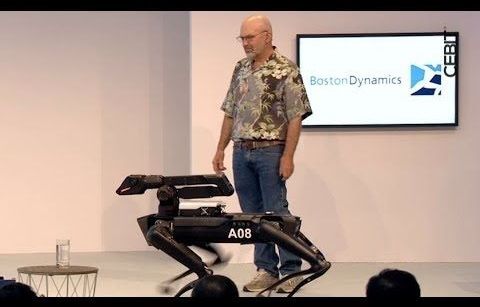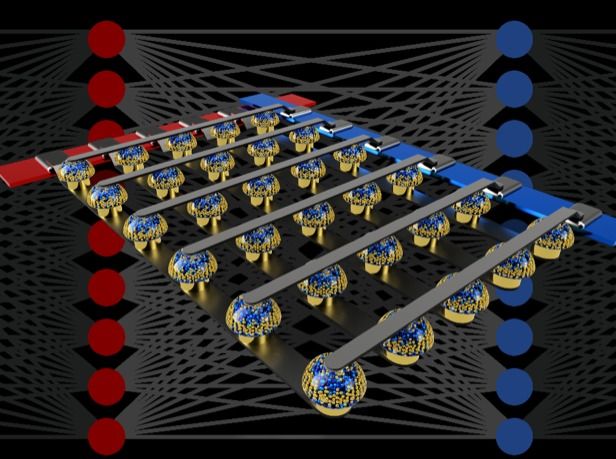Page 10025
Jun 18, 2018
Elon Musk and ‘State of Mind’s’ Transhumanism Philosophy
Posted by Derick Lee in categories: Elon Musk, singularity, transhumanism
What does it mean to be human in world of increasingly powerful technology? This is a question video games have grappled with, most recently in the “Deus Ex” franchise and the upcoming E3 show-stealing “Cyberpunk 2077.”
Daedalic’s “State of Mind” approaches the topic in a different, more philosophical way. Guns and body mods aren’t the order of the day. Rather, “State of Mind” is a narrative adventure that considers how far the human race will go to trade dystopia for utopia.
Creative lead Martin Ganteföhr is an avid follower of transhumanist theory, and how humanity will evolve over the coming decades as scientists pursue the singularity. Transhumanism explores the intersection of people and technology, with the ultimate goal giving all people access to technology that leads to an egalitarian utopia.
Continue reading “Elon Musk and ‘State of Mind’s’ Transhumanism Philosophy” »
Jun 18, 2018
Is your brain ready for Monday? Tease your mind with these four optical illusions
Posted by Alvaro Fernandez in category: neuroscience
Better than coffee smile
___ A great way to learn more about our brains and minds is to look at how we can trick them—that is, to see how we react to brain teasers and visual illusions. Below are four fun optical illusio…
Jun 17, 2018
New antibiotic shows long-lasting promise as superbug killer
Posted by Genevieve Klien in category: biotech/medical
Antibiotics have saved countless lives for the better part of a century, but these medical marvels may be approaching the end of their usefulness. Thanks to overuse, bacteria are rapidly evolving resistance to our best drugs, prompting scientists to try to develop new ones. Now, a team at Purdue University has found that a compound called F6 is effective at killing bacteria that have already evolved resistance to existing antibiotics. In tests, the new drug also seems less susceptible to bacterial resistance down the track.
The discovery and use of antibiotics was one of the greatest scientific achievements of the 20th century, as previously-dangerous procedures quickly became safe and infections relatively easy to treat. But after decades of overuse and overprescription, bacteria are fighting back, with more and more antibiotics becoming ineffective – including some of our last lines of defense. If left unaddressed, the problem is predicted to worsen until these so-called superbugs are killing up to 10 million people a year by 2050.
Jun 17, 2018
IBM overcomes von Neumann bottleneck for AI hundreds of time faster using hundreds of times less energy
Posted by Klaus Baldauf in categories: innovation, robotics/AI
IBM Research AI team demonstrated deep neural network (DNN) training with large arrays of analog memory devices at the same accuracy as a Graphical Processing Unit (GPU)-based system. This is a major step on the path to the kind of hardware accelerators necessary for the next AI breakthroughs. Why? Because delivering the Future of AI will require vastly expanding the scale of AI calculations.
Above – Crossbar arrays of non-volatile memories can accelerate the training of fully connected neural networks by performing computation at the location of the data.
This new approach allows deep neural networks to run hundreds of times faster than with GPUs, using hundreds of times less energy.
Jun 17, 2018
New (?) ideas for utilizing space for business: hypergravity for isotopic enrichment
Posted by Klaus Baldauf in categories: business, energy, space
One night, as I was putting my daughter to bed and waiting for her to fall asleep, I tried to think of some new markets for space utilization.
We often hear about attempts to find industrial uses for microgravity for growing crystals, for purification of electronic materials (which is an actual thing with ACME Advanced Materials: http://www.a2-m.com/), maybe growth of certain metal foams, etc. However, in space, you’re in both a hard vacuum and not physically resting on anything, so you can spin up something, and it will simply keep on spinning (stably, if you spin it around the correct axis) nearly indefinitely without any additional energy input and no wear on bearings or anything. So in fact, you can get basically any gravity level you want, including HYPERgravity, nearly for free.
What are the applications of this?
Jun 17, 2018
Science liaison Mariya Lyubenova
Posted by Genevieve Klien in categories: education, science, space
Mariya Lyubenova is an astronomer at ESO. Her research focusses on the motions and chemical properties of stars in galaxies to unravel the build-up and evolution of galaxies. She also works as a science liaison in the education and Public Outreach Department (ePOD).
Jun 17, 2018
8 Women in Science and Their Ground-Breaking Achievements
Posted by Genevieve Klien in category: science

Women deserve attention for their great contributions to science. Here are some favorite figures who got us to where we are today.
Jun 17, 2018
Boston Dynamics Shows Latest Advancements in Robotics at CEBIT 2018
Posted by Dan Kummer in category: robotics/AI

https://www.youtube.com/watch?v=GZgNPmeaTjo
Robots are getting lighter, faster, stronger and smarter. Marc Rybert, founder of Boston Dynamics shows the latest developments at CEBIT 2018.
Courtesy of CEBIT. June 2018.
Jun 17, 2018
HPV vaccine has almost wiped out infections in young women, figures show
Posted by Genevieve Klien in categories: biotech/medical, health
T he HPV vaccine has almost completely wiped out infections in young women, and if expanded to men could prevent thousands of cancer cases in Britain each year, new figures suggest.
New figures from Public Health England show that the rate of Human Papilloma Virus (HPV) in women aged between 16 to 21 who were vaccinated between 2010 and 2016 has fallen by 86 per cent.
More than 3,000 women are diagnosed with cervical cancer each year, and more than 800 will die from the disease, with most cases caused by the HPV virus.
Continue reading “HPV vaccine has almost wiped out infections in young women, figures show” »















